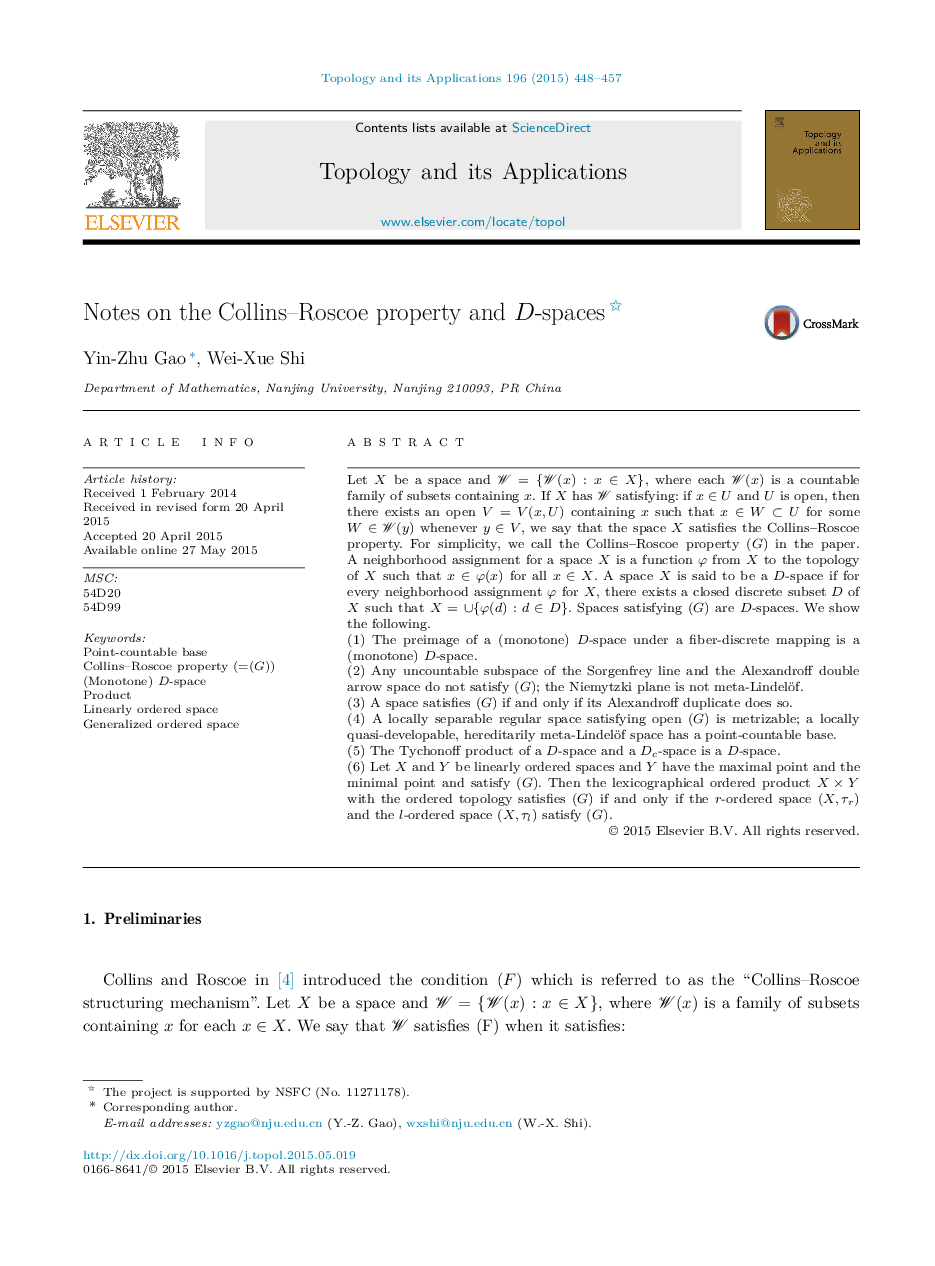| Article ID | Journal | Published Year | Pages | File Type |
|---|---|---|---|---|
| 6424566 | Topology and its Applications | 2015 | 10 Pages |
Let X be a space and W={W(x):xâX}, where each W(x) is a countable family of subsets containing x. If X has W satisfying: if xâU and U is open, then there exists an open V=V(x,U) containing x such that xâWâU for some WâW(y) whenever yâV, we say that the space X satisfies the Collins-Roscoe property. For simplicity, we call the Collins-Roscoe property (G) in the paper. A neighborhood assignment for a space X is a function Ï from X to the topology of X such that xâÏ(x) for all xâX. A space X is said to be a D-space if for every neighborhood assignment Ï for X, there exists a closed discrete subset D of X such that X=âª{Ï(d):dâD}. Spaces satisfying (G) are D-spaces. We show the following.(1) The preimage of a (monotone) D-space under a fiber-discrete mapping is a (monotone) D-space.(2) Any uncountable subspace of the Sorgenfrey line and the Alexandroff double arrow space do not satisfy (G); the Niemytzki plane is not meta-Lindelöf.(3) A space satisfies (G) if and only if its Alexandroff duplicate does so.(4) A locally separable regular space satisfying open (G) is metrizable; a locally quasi-developable, hereditarily meta-Lindelöf space has a point-countable base.(5) The Tychonoff product of a D-space and a Dc-space is a D-space.(6) Let X and Y be linearly ordered spaces and Y have the maximal point and the minimal point and satisfy (G). Then the lexicographical ordered product XÃY with the ordered topology satisfies (G) if and only if the r-ordered space (X,Ïr) and the l-ordered space (X,Ïl) satisfy (G).
